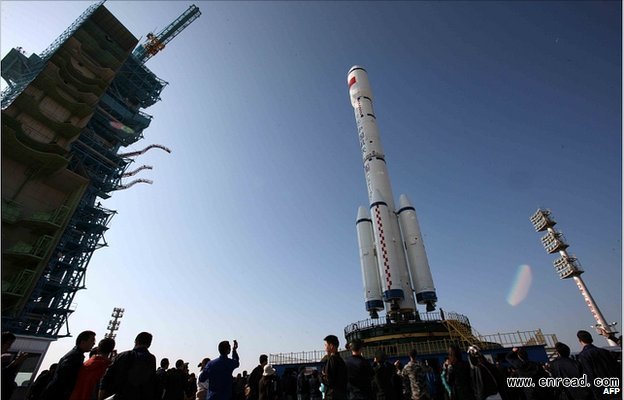| ||||||||||||||||||||||||||||||||||||||||||||||||||||||||||||||||
|
China is due to launch its first space laboratory, Tiangong-1. 中国将发射首颗太空实验室,天宫1号。  China is taking a stepped approach to the development of its human spaceflight programme Tiangong-1 will demonstrate the critical technologies needed by China to build a fully3 fledged space station - something it has promised to do at the end of the decade. The space lab is set to ride to orbit atop a Long March 2F rocket. State media say the lift-off from the Jiuquan Satellite Launch Centre in Gansu Province is likely to occur between 21:16 and 21:31 local time (13:16-13:31 GMT). The Long March will put Tiangong in a near-circular path around the Earth, just a few hundred km above the surface. It will operate in an autonomous4(自主的) mode, monitored from the ground. Then, in a few weeks' time, China will launch another unmanned spacecraft, Shenzhou 8, and try to link the pair together. This rendezvous5(集合点) and docking capability6 is a prerequisite7(先决条件) if larger structures are ever to be assembled in orbit. Commentators8 say Russian technology, or a close copy of it, will be used to bring the two craft into line. Assuming the venture goes well, two manned missions (Shenzhou 9 and 10) should follow in 2012. The yuhangyuans - two or three at a time - are expected to live aboard the conjoined(联合的) vehicles for up to two weeks. 点击  收听单词发音 收听单词发音
|
||||||||||||||||||||||||||||||||||||||||||||||||||||||||||||||||
上一篇:台风纳莎来袭 香港沉着应对 下一篇:普京将参加明年的总统选举 |
||||||||||||||||||||||||||||||||||||||||||||||||||||||||||||||||
- 发表评论
-
- 最新评论 进入详细评论页>>



